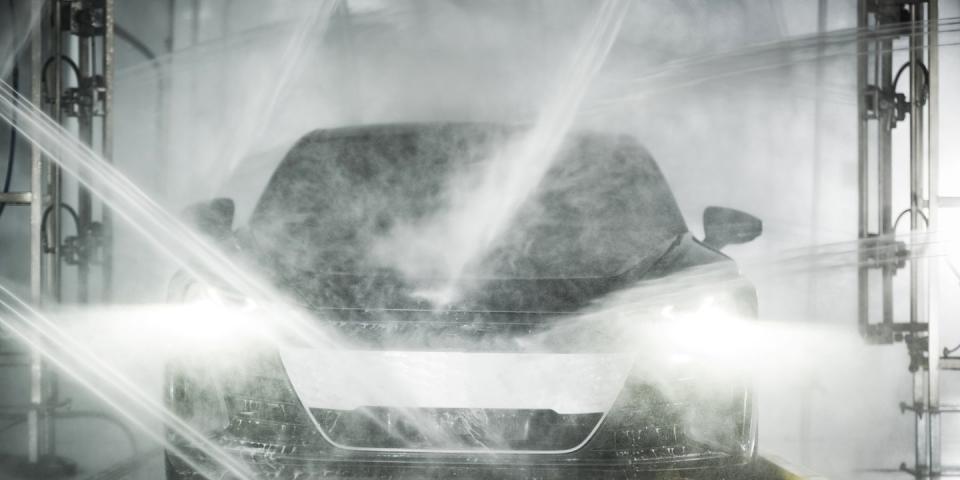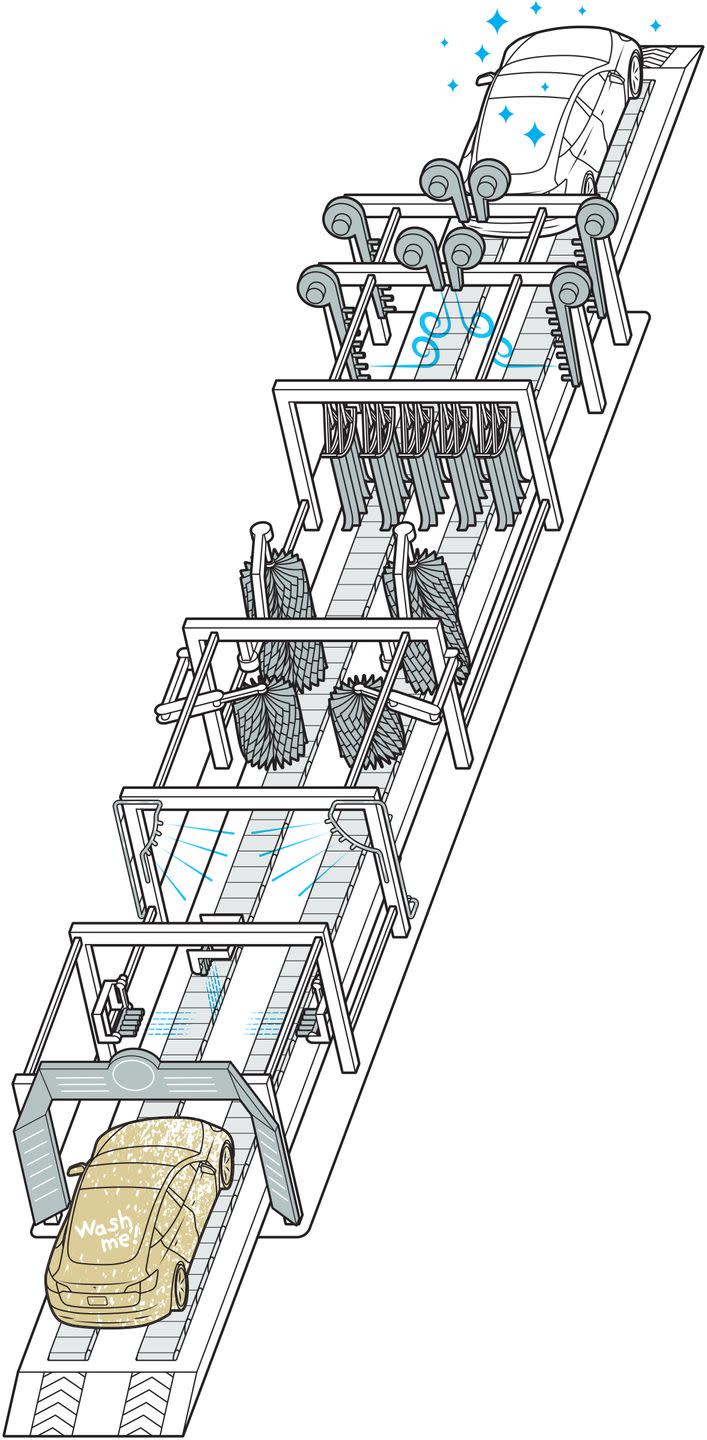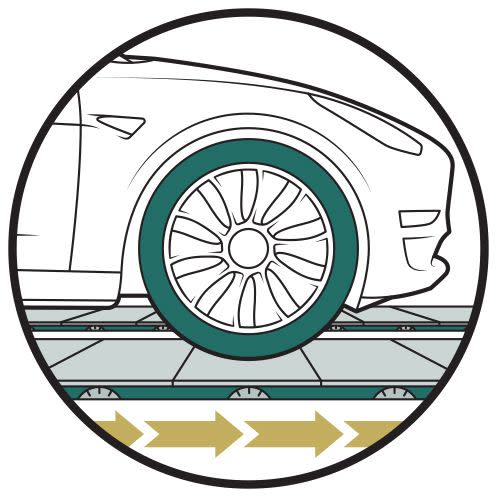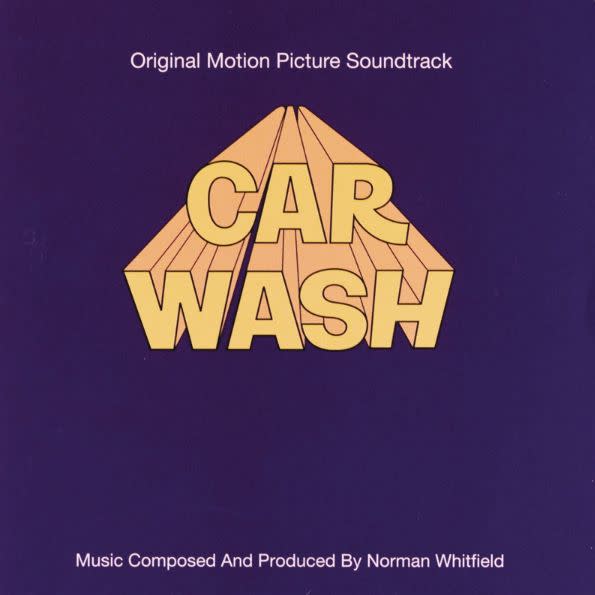What Really Goes On inside the Carwash?

From the November 2022 issue of Car and Driver.
Carwashing is a big-money business, raking in around $30 billion annually worldwide. According to the International Carwash Association (ICA), the U.S. has more than 62,000 carwash locations—that's one sudsy spot for every 5300 residents (or every 4400 registered vehicles).

The bane of Boy Scouts and cheerleaders out to make a buck, automatic washes handle most of the world's cars. They're designed to move you through and spit you out shiny and chrome, all without ever having to touch a rag.
Scrub-A-Dub-Dub Steps
Most automated carwashes rely on an intricate ballet of robotic scrubbers that dance around a vehicle as it sits patiently in the center of the bay or is gently tugged down the conveyor. High-pressure water cannons like bumper blasters, turbo blasters, and side-blaster baskets precede mitter half-moon baskets and wraparound brushes for full-contact washes or foam applicators like banana foamers or the Foaminator Maxx for touchless systems. A reverse-osmosis purified-water rinse and Mammoth Ear Air Dryer grand finale ensure a spotless finish.
Environmental Gentle Cycle
Many modern washes feature water-treatment capabilities that recycle dirty liquids into purified H2O indefinitely, closing the loop using cyclonic-separation and media-filtration tech and sedimentation tanks. "On average, a conveyor wash will use between 60 and 150 gallons of water per car, but only 30 gallons of that is fresh from the local supply," says ICA CEO Eric Wulf. "We might lose 20 percent in any given wash to evaporation and carryout, which is the water left behind, say, in the bed of a pickup." Wastewater is filtered before being discharged into sewers.
Ride with Me

As the automotive world evolves toward increased automation, new vehicle features and technologies pose fresh challenges for the carwash industry. "Moving wheels are a safety-system tripwire on modern cars," Wulf explains. "Wash conveyors that roll a vehicle through a wash by tugging on the front wheel are increasingly being replaced by belt conveyors that keep the wheels stationary." This helps avoid triggering auto brake holds, collision-warning systems, parking sensors, and other show stoppers. And some automakers are making things easier. "We'd love to see more companies add something like Tesla's Car Wash mode," Wulf says, referring to the feature that closes all the windows and disables wipers, automatic door locks, and exterior sensors.
Cleaning Up History
1940s: The world's first "semiauto" carwash opens in Hollywood, California. It uses a winch to pull vehicles down a line of human scrubbers.
1946: Paul's Automatic Auto Wash in Detroit is the first to combine a conveyor, overhead sprinklers, and manually operated mechanical brushes using a system invented by a guy named Thomas Simpson.
1951: Seattle's Anderson brothers pull people out of the mix entirely by automating the whole soap-and-scrub process, complete with an end-of-the-line blow-dry.
Keep Those Rags and Machines Hummin’

The song "Car Wash," by the group Rose Royce, was released in 1976 on the soundtrack of the film of the same name. The single sold 2 million copies.
You Might Also Like

 Yahoo Autos
Yahoo Autos 